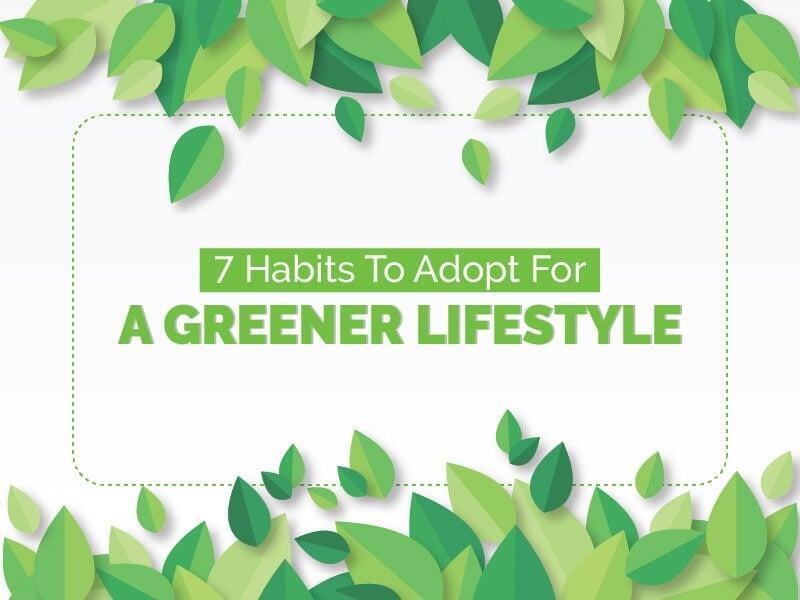10 Important Sustainable Lifestyle Tips:
Sustainable Lifestyle Tips: As individuals become more conscious of environmental issues and sustainability, they want to make good adjustments in their everyday behaviors to decrease their impact on the earth. Transitioning to a cleaner, greener lifestyle may seem overwhelming, but with the appropriate strategy, it is perfectly possible. Whether you want to minimize waste, lessen your carbon footprint, or simply live more environmentally conscious, even little changes can result in enormous benefits for both you and the globe.
In this blog, we will look at practical measures, recommendations, and tactics to assist you move to a more environmentally friendly way of life. From altering your purchasing habits to lowering energy consumption at home,

1. Understanding the Effects of Your Lifestyle Choices
Before you start making changes, you need first understand the environmental impact of your present lifestyle. The average person in the industrialized world generates a significant quantity of garbage, uses massive amounts of resources, and contributes to pollution, either directly or indirectly.
Carbon Footprint
Your carbon footprint is the amount of CO2 and other greenhouse gases emitted as a result of your activity. This encompasses everything from how much energy you use at home to what you eat and how you get about. Understanding where your emissions come from allows you to focus your efforts on particular areas for improvement.
Waste Production
From packaging to food waste, our daily choices have a big impact on the worldwide waste epidemic. Landfills and incineration are common garbage disposal methods, but they pollute land and water and emit toxic pollutants into the atmosphere.
Resource Consumption
Whether it’s water, electricity, or raw materials, our lifestyle depletes the Earth’s resources in disproportionate amounts. Learning to save and use these resources more sparingly can help us lower our environmental impact.
2. Start with mindful consumption.
Examining your spending habits is the first step toward living a more environmentally friendly lifestyle. Mindful consumption entails being mindful of the resources you are utilizing and the amount of waste you generate in the process.
Evaluate your needs vs. wants.
Before acquiring something, ask yourself, “Do I really need this?” Many of us are accustomed to making spontaneous purchases or obtaining items that we believe will better our lives, but in reality, they may be unnecessary. Prioritizing only what you absolutely need reduces resource demand and waste.
Choose quality before quantity.
Choosing durable, reusable, or repairable items over low-cost, throwaway ones can save money in the long run and reduce waste. When purchasing, try to invest on long-lasting items that will withstand the test of time.
Be conscious of packaging.
Packaging, particularly plastic, contributes significantly to environmental pollution. When shopping, select products with minimum or environmentally friendly packaging. Look for products that employ recyclable materials, or even better, buy in bulk to eliminate packaging waste entirely.
3. Reduce single-use plastics.
Plastic trash is one of the most serious environmental issues. Moving toward a cleaner, greener lifestyle necessitates addressing the issue of single-use plastics. These items—plastic straws, bags, water bottles, and food packaging—frequently end up in landfills or pollute the oceans.
Use reusable bags and containers.
One of the simplest and most effective adjustments is to replace single-use plastic bags with reusable cloth or tote bags. Furthermore, adopting reusable containers for food storage, particularly when shopping or transporting meals, can considerably reduce your plastic usage.
Say no to disposable plastics.
Replace throwaway plastic products such as straws, cutlery, and plates with reusable alternatives made of stainless steel, bamboo, or glass. Small changes can accumulate over time, making a significant difference in reducing plastic pollution.
Choose Plastic-free alternatives.
Look for non-plastic personal care products, cleaning supplies, and packaging. Many manufacturers now provide eco-friendly alternatives to daily commodities like shampoo, toothpaste, and cleaning products, such as zero-waste packaging or refillable containers.
4. Make sustainable food choices.
What you consume can have a big impact on your environmental footprint. The food industry accounts for a significant amount of global carbon emissions, deforestation, and water usage.
Eat more plant-based meals.
Animal agriculture is a major contributor to greenhouse gas emissions, deforestation, and excessive water use. You can lower your personal carbon footprint by eating less meat and dairy. Even incorporating a few plant-based meals per week can make a difference.
Choose locally sourced foods.
Purchasing local, in-season vegetables lowers the carbon footprint associated with food transportation. Farmers’ markets and community-supported agriculture (CSA) programs provide excellent opportunities to support local farmers while also gaining access to fresh, healthy food.
Reduce food waste.
Food waste can be reduced by carefully planning meals, using leftovers, and composting food scraps. According to research, around one-third of all food produced worldwide is wasted, which not only contributes to landfill issues but also wastes resources such as water and electricity.
5. Conserve water and energy.
Water and energy conservation are critical aspects of a sustainable living. By adopting basic behaviors, you can significantly reduce your household’s consumption.
Reduce water waste.
Make simple modifications around the house to save water, such as taking shorter showers, turning off the water while brushing your teeth, and repairing leaking taps. Installing water-saving devices such as low-flow showerheads and toilets can also help to minimize water usage.
Switch to energy-efficient appliances.
Consider updating to energy-efficient appliances that use less electricity and minimize your utility expenses. LED light bulbs, energy-efficient refrigerators, and washing machines are all good options for decreasing energy consumption.
Utilize renewable energy.
If possible, consider using alternative energy sources like solar or wind power. Many utility companies provide green energy programs, allowing customers to support sustainable energy generation without requiring significant changes to their home setup.
6. Establish a green cleaning routine.
The cleaning solutions we use in our homes frequently include hazardous chemicals that are harmful to both the environment and our health. Switching to greener alternatives allows you to lessen your exposure to dangerous compounds while also lowering your environmental imprint.
Use environmentally friendly cleaning products.
Look for cleaning products that are biodegradable, nontoxic, and manufactured from renewable materials. Many brands now offer ecologically friendly alternatives that are just as effective as traditional cleaning products but contain less toxic chemicals.
DIY Natural Cleaning Solutions
Another option for reducing chemical consumption is to produce your own cleaning solutions at home. Vinegar, baking soda, and lemon juice are useful and safe alternatives to harsh chemicals when cleaning surfaces, windows, and even laundry.
Recycle and reuse.
Instead of using throwaway paper goods, clean with old towels, rags, or newspapers. This helps to reduce waste and make your cleaning routine more sustainable.
7. Promote Eco-Friendly Transportation
Transportation is one of the main sources of greenhouse gas emissions. Transitioning to more environmentally friendly forms of transportation can drastically reduce your carbon footprint.
Walk or Bicycle
For short excursions, consider walking or biking instead of driving. This not only reduces pollutants, but also improves your health and well-being.
Use public transportation.
Using public transportation reduces the number of cars on the road and lowers overall emissions. If public transit is accessible in your area, consider taking it for your daily commute or errands.
Drive an electric vehicle.
If you must drive, consider switching to an electric or hybrid vehicle. These automobiles emit significantly fewer pollution than regular gasoline-powered vehicles, and they are becoming more affordable and accessible.
Join Local Sustainability Initiatives.
Many cities provide environmental programs, such as cleanup days or tree-planting activities. Participating in these activities allows you to make a good difference in your community while also inspiring others to follow suit.

[…] The best part is that a lot of these superfoods are tasty, adaptable, and healthful. There is a superfood to fit every taste and way of life, from protein-rich quinoa to creamy avocados and colourful berries. Don’t hesitate any longer; begin using these ten superfoods in your regular meals and reap the rewards of a more energetic, healthy lifestyle. […]